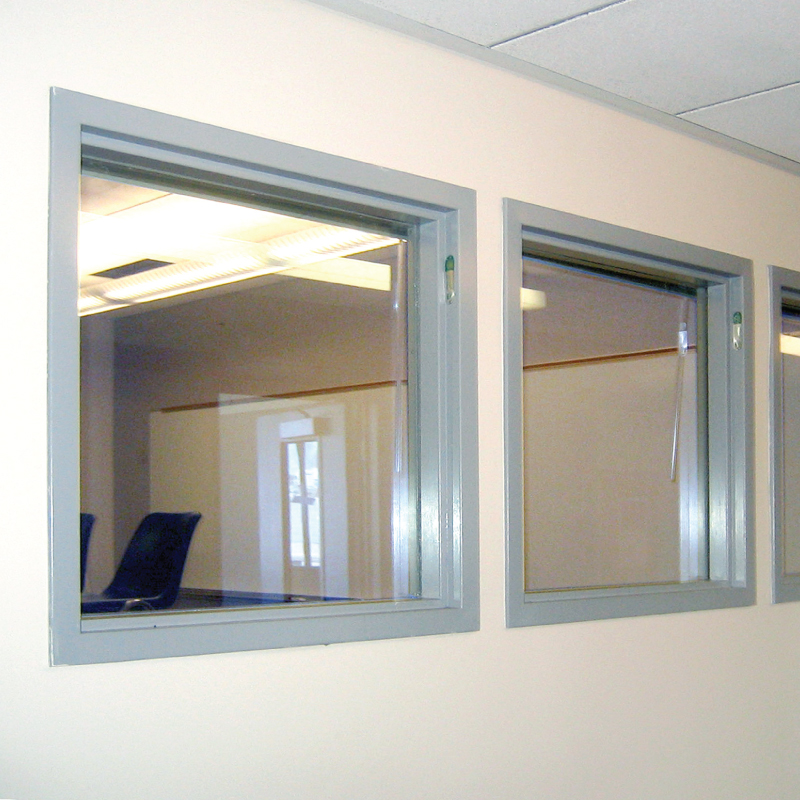Superlite I-XL Limits Temperature Rise

Re: SuperLite I-XL
Dear Mr. Meyer:
Last month Warnock Hersey conducted a 1-hour fire test of a door, side light, and transom assembly without the hose stream test. The purpose of the test was to examine the ability of the glass to restrict the transmission of heat through the glazing. I know that some types of glazing are capable of limiting the temperature rise on the unexposed face to a degree as good as or better than that permitted a 1-hour wall, i.e. a temperature rise of not more than 250ºF. that would be Contraflam or SuperLite II. Another is made up of 2 or more layers of glass cemented together with an intumescent material. I don’t know what the temperature rise on the unexposed surface may be but it is bound to be significantly lower than wired glass and other annealed glass. A third type has an invisible coating of some sort which is highly effective in reducing the temperature rise on the unexposed surface such as SuperLite I-XL. In my opinion the use of any or all of these glass “improvements” should be encouraged and promoted. There are numerous special situations where the use of such type of glazing would be highly beneficial.
I noticed that the California Legislature passed AB 747 concerning Fire Protection: Very High Fire Hazard Severity Zone: Wood. That should be beneficial in reducing fire spread where roof coverings are concerned. But it is my observation that the spread of fire from one building to another is not just by using appropriate roof coverings. Take the Laguna Beach fire of 1994 (?). This fire spread from one very expensive to another by radiant heat from one burning building to another gaining entrance through windows. The transmitted heat ignited curtains, drapes, and furniture and the house is lost. This was repeated time and again. It was not a matter of vegetation too close to the buildings. It would be a considerable step forward during the rebuilding to use glazing materials having a low temperature transmission.
The Technical Committee of NFPA 101, Chapter 6 on Fire Protection Features has approved a revision which would introduce the use of the new types of glass. At present 25% of the area of a 1-hour fire-rated corridor wall can be made of wired glass. It is hard to justify this except by admitting that some glazing in corridor walls is necessary or desirable and that with nothing better available than wired glass, wired glass was made acceptable. When the corridor wall construction is 1-hour fire rated, and that limits the temperature rise on the unexposed wall surface to 250ºF, how can you justify the use of material with no limitation on the temperature rise to be used for up to 25% of the area of that corridor wall? With a temperature of 1000ºF at five minutes (According to the Standard Time Temperature curve), the temperature on the unexposed side would make the typical 5-foot wide corridor untenable quite rapidly. Based on experimental work I conducted using the Los Angeles Fire Department test furnace, it was found that with a temperature rise of 450ºF on the unexposed surface, a 22-inch wide unit of exit width (in vogue at the time) was lost. That is, you could not expect a person to pass by the door when the temperature on the unexposed face of the door exceeded 450ºF above the ambient at the end for 30 minutes.
As to the omission of the hose stream test, that raises questions. In my opinion the hose stream test is inappropriate for all glazing installations. It may be appropriate for glazing in exterior walls where the protections of openings is required because the development of through openings, i.e. breaking of glass, could permit flame travel. But, inside a building where the glazing may be in a corridor wall, the hose stream (as spelled out in the test standard) is not realistic. If we assume a corridor width of eight feet, the fire hose in use would probably be 1 ½ or 1 ¾ -inch diameter. The nozzle orifice would be variable but certainly not 1 1/8 –inch. The hose stream would not be applied from 20-feet away at right angles to the glazing. In a hotel, office building, or retail store the corridor is unlikely to be more than 6-feet wide. This is not to say that the chilling effect of a sprinkler discharge on the glass is not important because is it VERY important. If the glass can’t stand up to the chilling effect of the sprinkler water, it should not be acceptable. Possibly a new type of hose stream test is warranted but not the one used currently in the test for fire doors.
In conclusion, this is a fire protection consideration which can be provided by the new type of glass available. Every building code and every NFPA Standard having provisions for the use of alternate materials, could use the information developed by the fire testing done by Warnock Hersey. It is not an all encompassing proposal but rather one which can be applied individually to meet the circumstances. I would encourage a limited listing and labeling of this product.
Respectfully,
John G. Degenkolb

